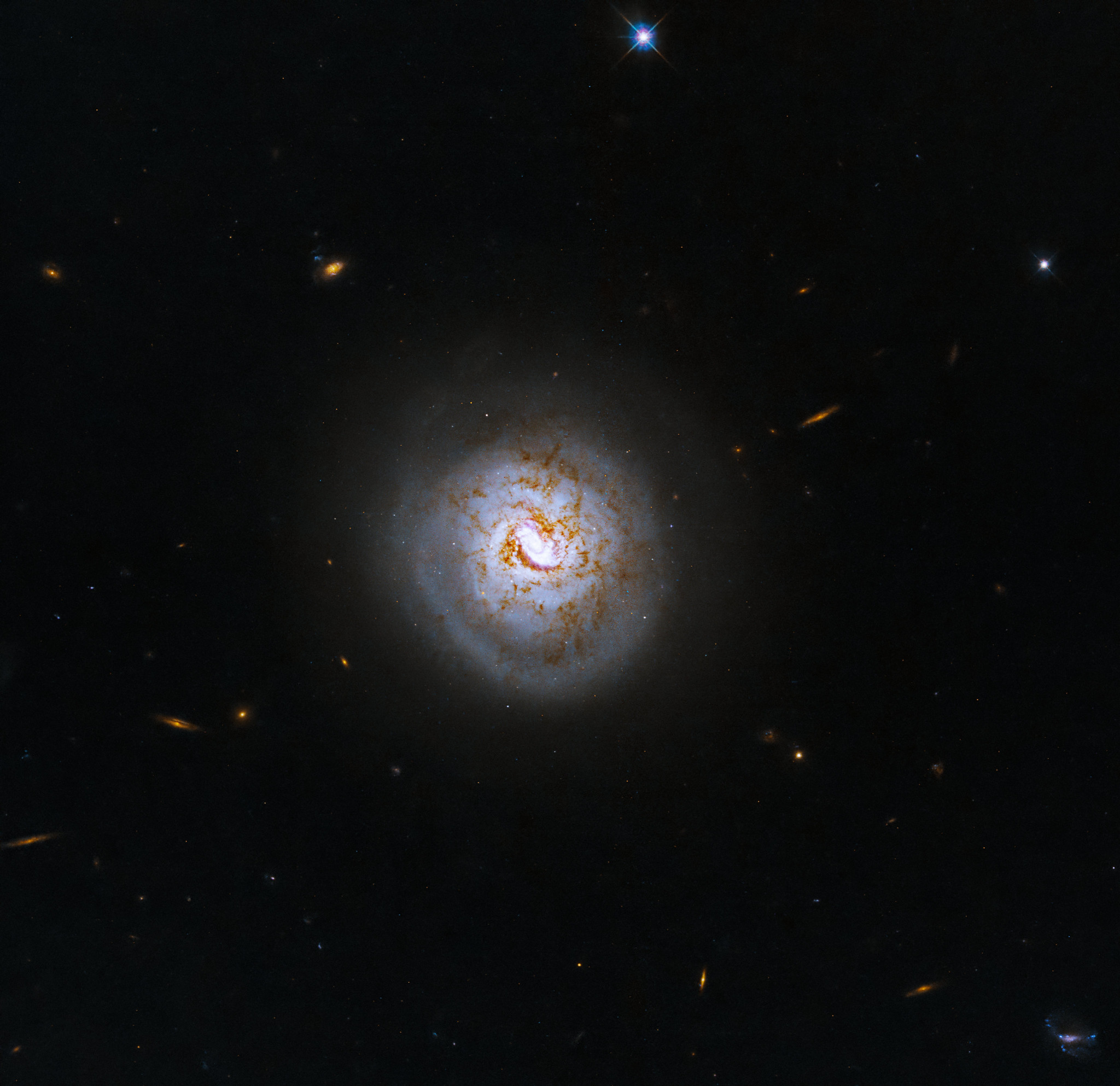What it is: ESO 420-G013, a very bright spiral galaxy with a black hole at its centerWhen it was taken: Jan. 30, 2024Where it is: 50 million light-years away in the Sculptor constellationWhy it’s special: The Hubble Space Telescope captured the distinct features of a rare face-on spiral galaxy, showcasing dark dust lanes against the backdrop of numerous stars.The image reveals a bright core, brownish dark dust filaments, and an almost perfectly round disk, as Hubble has a direct face-on view of ESO 420-G013.ESO 420-G013 is not only an example of a spiral galaxy but also a Seyfert galaxy. Named after American astronomer Carl Keenan Seyfert, these galaxies have a remarkably bright, point-like active galactic nucleus powered by a supermassive black hole, according to NASA. The black hole within ESO 420-G013 is actively drawing in surrounding material and emitting powerful radiation while also generating new stars at a rapid pace.Related: Confirming Relativity: New Image of the First Photographed Black Hole A close-up view of the face-on spiral galaxy ESO 420-G013 (Image credit: NASA/ESA/A. Evans (University of Virginia)/Processing: Gladys Kober (NASA/Catholic University of America))Seyfert galaxies like this one emit infrared light, which the Hubble telescope can detect using its Wide Field Camera 3, sensitive to ultraviolet, visible and infrared light.What makes ESO 420-G013 unique is its clear visibility. Unlike most galaxies with active galactic nuclei where the black hole’s radiation overshadows the galaxy’s light, Seyfert galaxies like ESO 420-G013 allow the galaxy’s structure to be distinctly observed.ESO 420-G013 was captured by Hubble as part of research on luminous infrared galaxies, known for their intense brightness in the infrared spectrum.
A close-up view of the face-on spiral galaxy ESO 420-G013 (Image credit: NASA/ESA/A. Evans (University of Virginia)/Processing: Gladys Kober (NASA/Catholic University of America))Seyfert galaxies like this one emit infrared light, which the Hubble telescope can detect using its Wide Field Camera 3, sensitive to ultraviolet, visible and infrared light.What makes ESO 420-G013 unique is its clear visibility. Unlike most galaxies with active galactic nuclei where the black hole’s radiation overshadows the galaxy’s light, Seyfert galaxies like ESO 420-G013 allow the galaxy’s structure to be distinctly observed.ESO 420-G013 was captured by Hubble as part of research on luminous infrared galaxies, known for their intense brightness in the infrared spectrum.
Space Snapshot: Hubble Spots a ‘Baseball Galaxy’ Hosting a Black Hole










